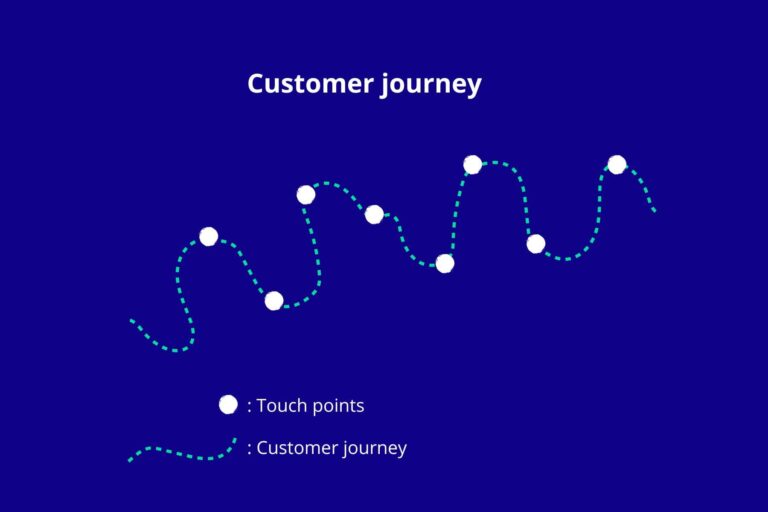The most underrated step in sales and marketing alignment
In business today, the synergy between sales and marketing teams is often hailed as the holy grail of success. It’s no secret that when these two teams work seamlessly together, magical things can happen: revenue goes up, customer acquisition becomes more efficient, and the company’s growth trajectory reaches new heights. But in that quest for sales and marketing alignment (smarketing as it is often abbreviated), one crucial step is often overlooked and seriously underestimated. That step is understanding the customer journey.
Over time, the customer journey has become increasingly complex. Gone are the days when a customer’s path to purchase was linear: from awareness to consideration to decision. Today, customers interact with brands across different touch points, both online and offline, before making a purchase decision. This complexity is where sales and marketing alignment can make a difference. And it all begins with understanding the customer journey.
Why understanding the customer journey is underrated
The customer journey is often seen as something pretty vague, drowned in buzzwords and marketing jargon. It is less tangible than lead generation, email campaigns, or closing deals, which is why it tends to get less attention. But underestimating the customer journey can be a costly mistake for businesses of all sizes. Here is why you should pay attention to the customer journey.

Foundation of effective marketing
Running effective marketing campaigns requires you to understand your customers’ needs, pains and behaviors. By mapping out the customer journey, marketing teams can create the right content and campaigns for every stage. It enables you to attract the right people, nurture leads and guide them towards a purchase.
Influence on sales strategies
Sales teams rely on leads to meet their quotas. And these leads are generated by marketing most of the time. Understanding where a lead is in the customer journey can help sales professionals optimize their approach. Whether it’s a nurturing email for a lead, or a product demo for a prospect in the decision stage, sales people must understand what the customer journey looks like in order for them to send adapt their approach.
Enhanced customer experience
Customers today have high expectations from your brand. They expect personalized and seamless experiences from your entire team. A deep understanding of the customer journey allows businesses to provide highly relevant content and solutions at the right time. This helps foster trust and loyalty and creates a great customer experience.
Improved ROI
By aligning sales and marketing efforts with the customer journey, you reduce wasted resources. Think all the unnecessary emails you can skip. Saving resources happens especially when you automate, as you can read in this blog. Knowing the cuetomer journey really well helps you allocate budgets more effectively, focusing on activities that drive results at each stage of the journey. Your ROI will improve.
How to embrace the customer journey
We encourage our customers to follow a 5 step process to get a clear understanding of the customer journey their target audience goes through.
Research – Start by conducting thorough research to understand your customers. Who are they? Andwhat challenges do they face? What motivates their purchasing decisions? Collect data from various sources, including surveys, social media, and customer interviews. You should have buyer personas worked in detail actually, you can use this resource to do it.
Map the Journey: Create a detailed customer journey map that outlines all the touch points a customer has with your brand. This should include pre-purchase, purchase, and post-purchase stages.
Communication: Encourage open communication between your sales and marketing teams. Share insights from your research and customer journey mapping to align everyone on the same page.
Technology: Invest in marketing automation and customer relationship management (CRM) tools. These technologies can help you track interactions with prospects and customers, and provide valuable data for both teams.
Continuous Analysis: Regularly review and update your customer journey map, AND your buyer personas while you’re at it. Consumer behaviors and preferences evolve, so staying current is essential for you to achieve the desired results.
The payoff
When sales and marketing teams align their efforts with a deep understanding of the customer journey, the benefits are undeniable. Those who made the effort to truly understand their customers’ buyer journey experience improved conversion rates, higher customer retention, and increased revenue. An underestimated added value to the company is that employees are happier and more engaged when they see the direct impact of their work.
And we understand, going through the steps to embrace that buyer journey is perhaps not the most fun part of a marketer’s job. But it is worth every second. so before you read about these 4 steps to sales and marketing alignment, you should first understand the buyer journey. It’s the cement that keeps the building blocks together and turns your marketing and sales teams into a cohesive and effective force. So, embrace it, understand it, and watch your business thrive in the age of the customer-centric approach.
Calculate your marketing ROI
Curious what ROI you can expect from well thought out marketing and sales efforts with your brand, the inbound way?






